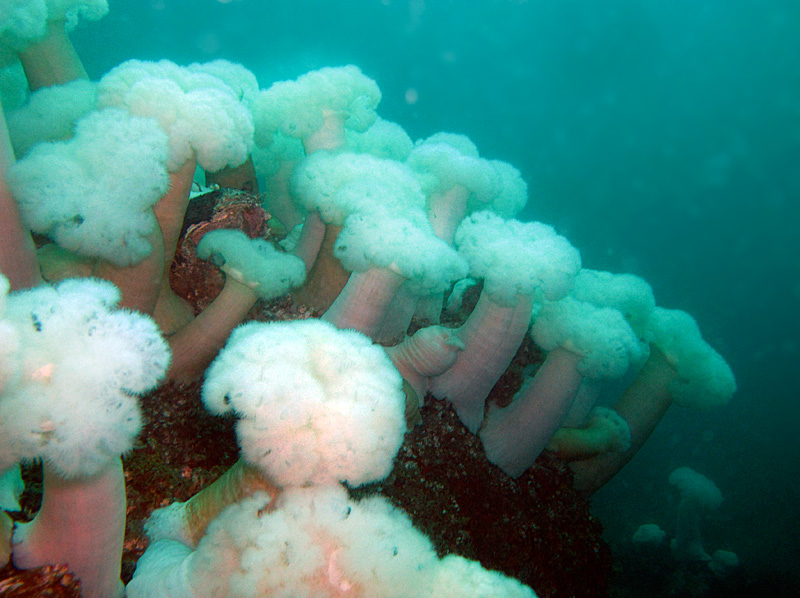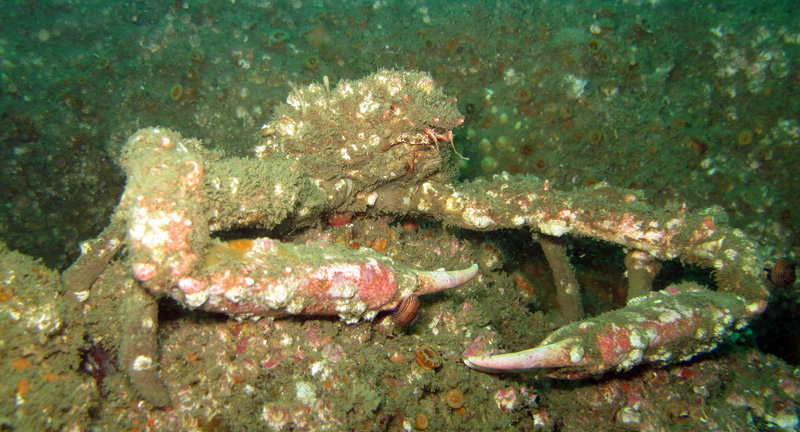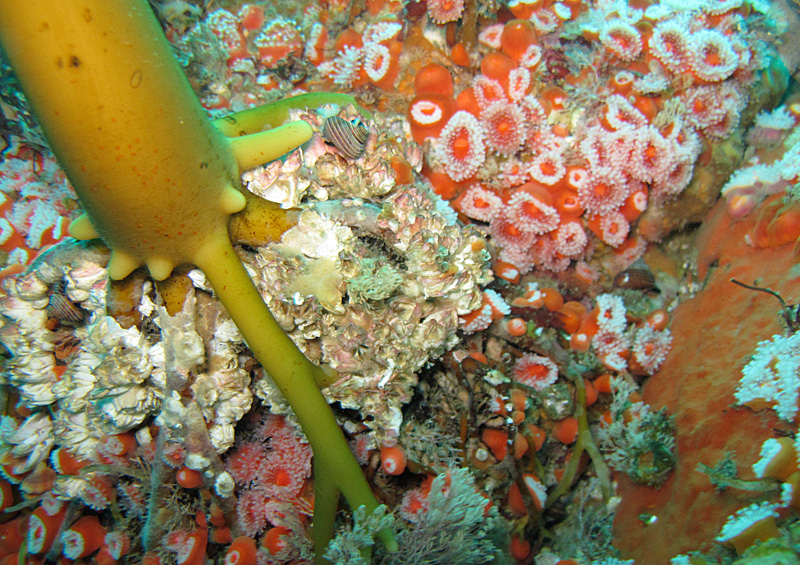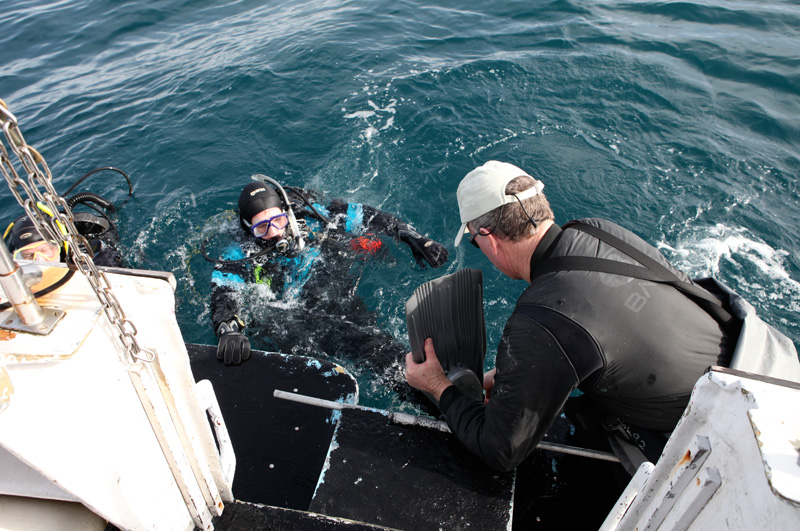Whether you’re new to Monterey diving or not, Ballbuster is one of the area’s more unique dive sites always worth exploring.
Ballbuster, named after the large 50-pound lead weights (balls) used for commercial fishing which were snagged on this rocky obstacle, is located about 2/3 mile from the Coral Street entry and is a boat dive, not reachable from shore. The actual dive site centers around a subsurface pinnacle which rises from the floor at a depth of about 110 feet to around 70 feet. Because of its exposure to strong currents and its proximity to the open sea, the site offers both challenges to the diver (and boat captain) and rewards in the form of abundant and diverse sea life. On any given day, Mola mola, octopus, large schools of rockfish, wolf eels, and plenty of macro life can be found here. Because the pinnacle is relatively small in size, much of the site can be explored on a single dive. Many of Monterey’s commercial dive boats visit Ballbuster regularly and are the best way to both find the site and be sure the conditions are right for diving here safely.
Because of the frequently strong current here, you must descend down the anchor line and back up it at the end of the dive. Carrying a surface marker buoy (SMB) is also important, not only due to the strong current potentially carrying you away, but also due to the large amount of boat traffic here which pose a hazard on the surface – there are lots of commercial and private boats leaving and returning to the harbor that go near or directly over the site. Ballbuster should be considered an advanced dive due to the current and other factors, including a maximum depth of over 100 feet and the boat traffic overhead.
On my last dive at Ballbuster, we stopped there after a longer run down to Carmel, and the larger swells we experienced farther south had subsided and the surface was glassy calm, with only the occasional long swell coming in. After finding the exact location through GPS (since the pinnacle doesn’t reach the surface and there are no exact reference points on land, it’s the only way to be sure you’re on it), we dropped anchor and soon headed down the anchor line to explore all the site had to offer.
Thanks to our skilled captain, we descended down the line and arrived just a short swim away the pinnacle, which is covered with colorful strawberry anemones. Visibility today was about 45 feet, and it’s been known to reach up to 80 feet on a good day (and for those not familiar with Monterey diving, the winter months frequently offer the best visibility). Descending deeper down the side, large clusters of white Metridium anemones appear as big white fluffy clouds. Inside the fractures and cracks of the rocks hundreds of smaller shrimp, colorful nudibranchs, and other invertebrates make this a good site for underwater photography – and like most dive sites, there is just as much to see in a small area if you take the time to examine it closely. One of the divers on the boat spotted an octopus inside one of the large cracks, but we missed it. I shot a few photos with my Canon G12 throughout the dive.
Air goes fast when swimming against a current and at the depths we were at, so we made our way back to the anchor line for a controlled ascent and safety stops on the way up – I made an extra long 10 minute stop because I had the air to do so, and it was my second relatively deep dive of the day. Although I’ve dived Ballbuster several times, I’m looking forward to coming back – there is always more to see here. I consider it one of the best dives in the bay.
As a side note, this is a relatively common dive site and divers look forward to seeing the abundant life here, so although it may technically be legal, hunting is strongly discouraged. The location is also very close the Pacific Grove Gardens State Marine Conservation Area which prohibits such activities.
It’s a great time of year for taking some dives in Monterey! So get out there and dive!
For information on Monterey’s dive boats, click here.




